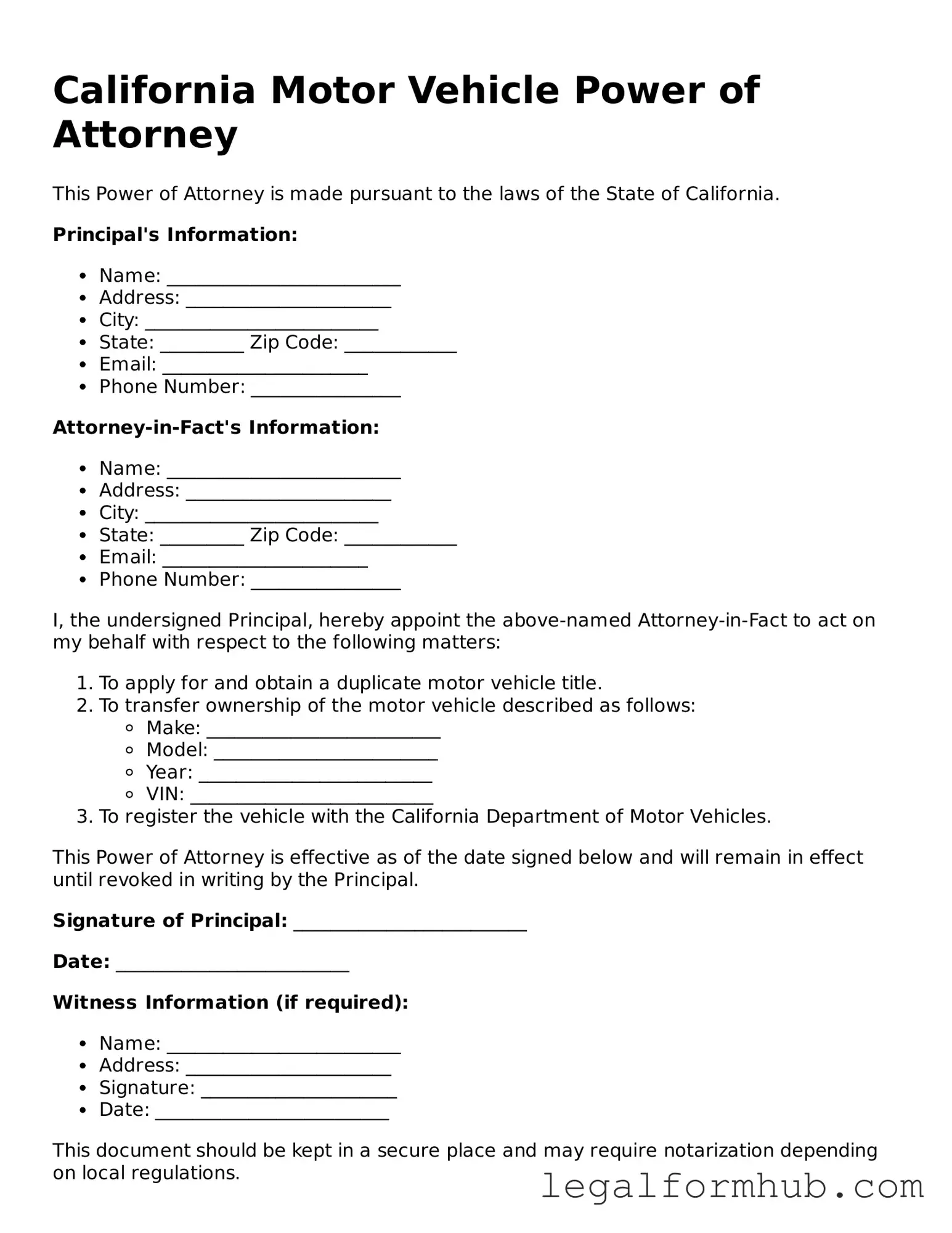The California Motor Vehicle Power of Attorney form is similar to the general Power of Attorney document, which allows one person to grant another person the authority to act on their behalf. This broader form can be used for various purposes, including financial and legal matters. Just like the Motor Vehicle version, it requires the principal to clearly outline the powers being granted, ensuring that the agent understands their responsibilities. Both documents aim to provide clarity and legal protection for both parties involved.
Another document that shares similarities is the Vehicle Title Transfer form. When someone sells or transfers ownership of a vehicle, this form is essential. It serves to officially change the title from one owner to another. Much like the Motor Vehicle Power of Attorney, this form must be filled out accurately to avoid complications. Both documents play crucial roles in facilitating the legal transfer of vehicle ownership, ensuring that all parties are in agreement and that the transaction is documented properly.
The Bill of Sale is another document that resembles the Motor Vehicle Power of Attorney. This document serves as proof of the sale of a vehicle, detailing the transaction between the buyer and seller. It includes vital information such as the vehicle identification number (VIN), sale price, and date of sale. Both the Bill of Sale and the Power of Attorney form require signatures from the involved parties, establishing a legal record of the agreement and protecting the interests of both the buyer and seller.
Similarly, the Release of Liability form is akin to the Motor Vehicle Power of Attorney. When a vehicle is sold or transferred, the seller often completes this form to inform the Department of Motor Vehicles (DMV) that they are no longer responsible for the vehicle. This document protects the seller from any future liabilities associated with the vehicle. Both forms ensure that the transfer process is smooth and that the responsibilities are clearly defined, providing peace of mind for all parties involved.
The California Vehicle Bill of Sale serves as a record of the sale of a vehicle between a buyer and a seller. It includes vital information such as the vehicle's VIN, sale price, and the date of the transaction. This document is essential for ownership transfer and protects both parties by providing proof of the sale, much like the resource available at arizonapdfs.com/motor-vehicle-bill-of-sale-template, which offers additional information and templates related to vehicle sales.
Lastly, the Application for Title or Registration form is another document that parallels the Motor Vehicle Power of Attorney. This form is necessary when registering a vehicle with the DMV or applying for a new title. It requires information about the vehicle and its owner. Both documents are integral to the vehicle ownership process, ensuring that all legal requirements are met and that the ownership is properly recorded. They help streamline interactions with the DMV, making the experience more efficient for vehicle owners.
